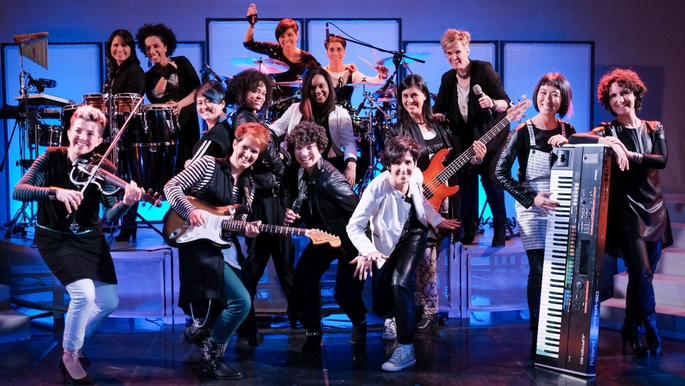
Gen Verde Tour
 Dates: May 12th: Workshop with young people and final performance May 13th: Concert: “On the Other Side” At 9:00 p.m. GenVerde Tours
Dates: May 12th: Workshop with young people and final performance May 13th: Concert: “On the Other Side” At 9:00 p.m. GenVerde Tours

 Dates: May 12th: Workshop with young people and final performance May 13th: Concert: “On the Other Side” At 9:00 p.m. GenVerde Tours
Dates: May 12th: Workshop with young people and final performance May 13th: Concert: “On the Other Side” At 9:00 p.m. GenVerde Tours
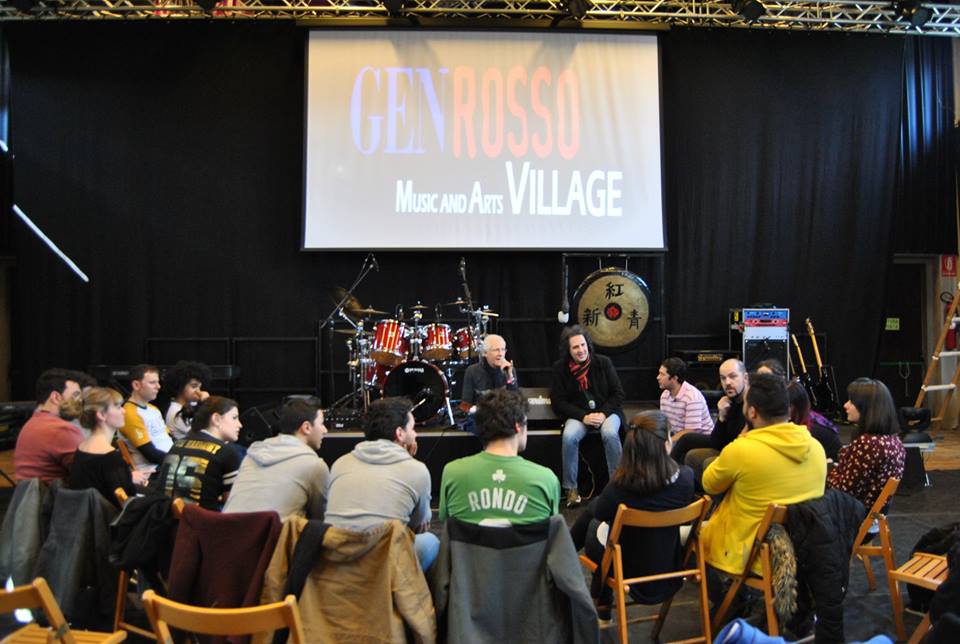
 The GEN ROSSO (INTERNATIONAL PERFORMING ARTS GROUP) is presenting the 1st edition of the Gen Rosso Music and Arts Village, a residential in-depth artistic experience with the sharing of values in the light of the charism of unity. The project addresses young professionals and students preferably from 18 to 30 years of age, in disciplines such as music, dance, singing and theatre. The didactic method is designed and handled by Gen Rosso tutors having the qualified artistic capacities and experience. The program will include the study of specific themes. Exchange of experiences, dialogue sessions and practical labs will be exhibited in a final performance. The evening sessions will be enriched with interesting artistic contributions. The first edition of the Village will take place from 25 March (arrivals in the afternoon) to 1 April 2018. A participation certificate will be issued at the conclusion. Gen Rosso, through the Village secretariat, is at everyone’s disposal for further information and all the documentation needed for enrolment. (limited number). Contacts Secreteriat VILLAGE: +39 0558339821 (9.00-13.00, Italian time) Franco Gallelli cell +39 3806592166 Email secretariat VILLAGE: village@genrosso.com
The GEN ROSSO (INTERNATIONAL PERFORMING ARTS GROUP) is presenting the 1st edition of the Gen Rosso Music and Arts Village, a residential in-depth artistic experience with the sharing of values in the light of the charism of unity. The project addresses young professionals and students preferably from 18 to 30 years of age, in disciplines such as music, dance, singing and theatre. The didactic method is designed and handled by Gen Rosso tutors having the qualified artistic capacities and experience. The program will include the study of specific themes. Exchange of experiences, dialogue sessions and practical labs will be exhibited in a final performance. The evening sessions will be enriched with interesting artistic contributions. The first edition of the Village will take place from 25 March (arrivals in the afternoon) to 1 April 2018. A participation certificate will be issued at the conclusion. Gen Rosso, through the Village secretariat, is at everyone’s disposal for further information and all the documentation needed for enrolment. (limited number). Contacts Secreteriat VILLAGE: +39 0558339821 (9.00-13.00, Italian time) Franco Gallelli cell +39 3806592166 Email secretariat VILLAGE: village@genrosso.com
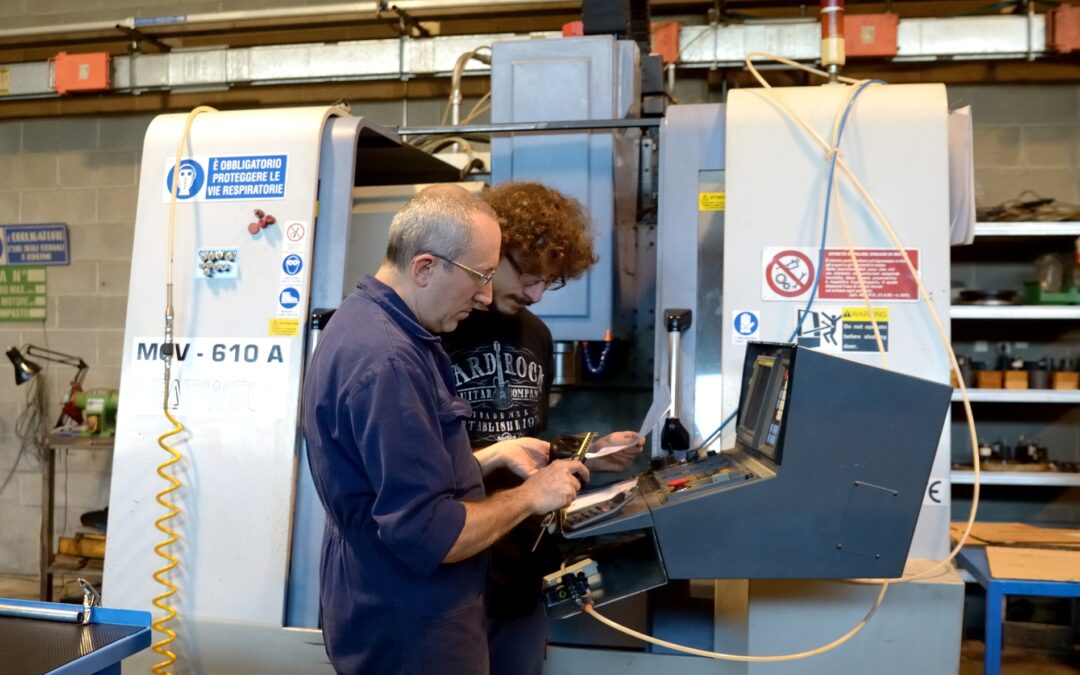
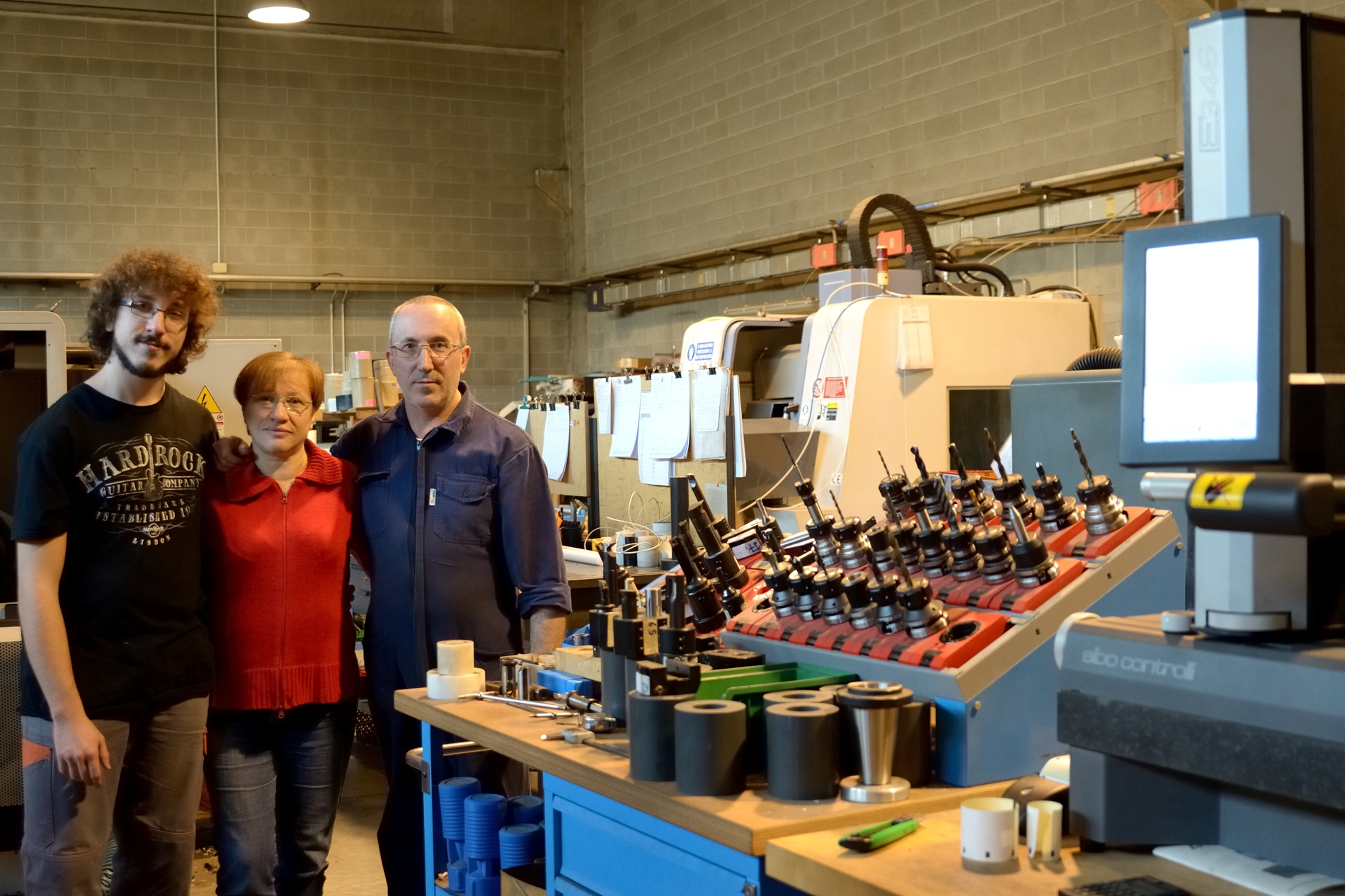 Letizia Mombelli and her husband are the owners of a small company in Brescia, northern Italy. Over the years, they have coped with many crisis and setbacks but have always made decisions in front of God, entrusted their worries to him and relied upon his providence. They began by opening up a small mechanics workshop with just a few employees. However, shortage of work, bureaucracy and their choice to avoid corruption at all costs led to them losing lots of money. Very sadly, they had to let most of their workers go and sell a lot of their equipment in order to pay their employees until they found another job. Letizia said, “We felt a terrible sense of failure but we didn’t give up. We had the support of the members of the Movement who prayed for us. We trusted in God and asked him to guide us in the decisions we were making; we tried to maintain good relationships with our clients, suppliers, representatives – with everyone who came to the workshop. We didn’t have to wait too long before God’s providence arrived.” After coping very courageously with that difficult phase of the business, there was the possibility of change: other small businesses and suppliers provided practical help and the company was able to get back on its feet. Letizia continued, “One of the best things to emerge from that time was seeing what our children learned from the experience. They grew up appreciating the simple things in life and were able to see God’s love in lots of small things. This brought us together as a family.”
Letizia Mombelli and her husband are the owners of a small company in Brescia, northern Italy. Over the years, they have coped with many crisis and setbacks but have always made decisions in front of God, entrusted their worries to him and relied upon his providence. They began by opening up a small mechanics workshop with just a few employees. However, shortage of work, bureaucracy and their choice to avoid corruption at all costs led to them losing lots of money. Very sadly, they had to let most of their workers go and sell a lot of their equipment in order to pay their employees until they found another job. Letizia said, “We felt a terrible sense of failure but we didn’t give up. We had the support of the members of the Movement who prayed for us. We trusted in God and asked him to guide us in the decisions we were making; we tried to maintain good relationships with our clients, suppliers, representatives – with everyone who came to the workshop. We didn’t have to wait too long before God’s providence arrived.” After coping very courageously with that difficult phase of the business, there was the possibility of change: other small businesses and suppliers provided practical help and the company was able to get back on its feet. Letizia continued, “One of the best things to emerge from that time was seeing what our children learned from the experience. They grew up appreciating the simple things in life and were able to see God’s love in lots of small things. This brought us together as a family.” 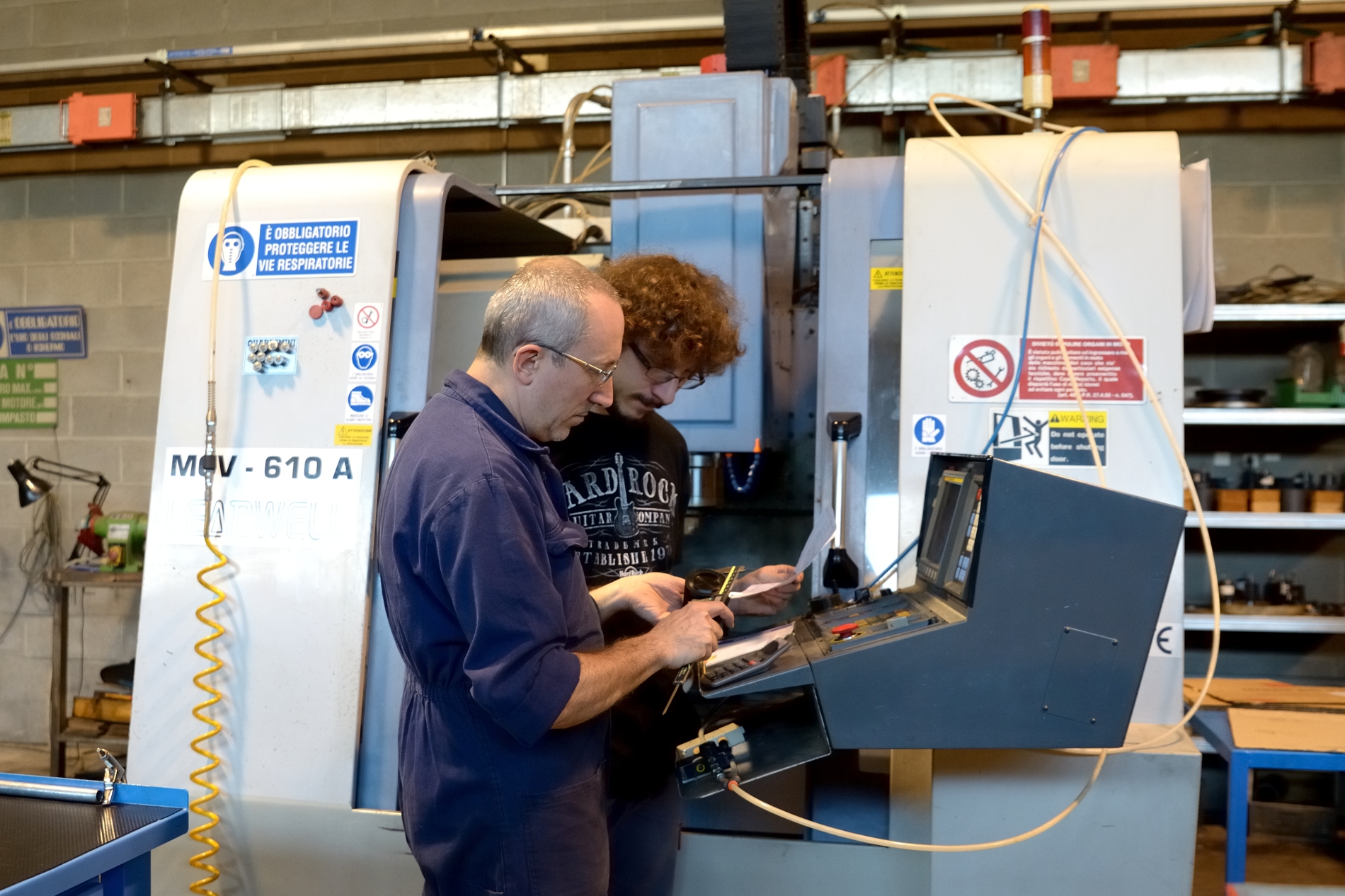 However, in 2009, Letizia’s company was hit by the global economic crisis and orders for work began to decrease significantly. Once again, the family trusted in God and orders picked up again. In 2016, the company received a very large order which guaranteed economic stability for several years. After dispatching the first consignment, Letizia discovered that their products were being used in the arms trade. Thinking of the images of despair of refugees fleeing from war torn countries, Letizia and her family decided to reject the order. “We were very apprehensive about turning down work but my husband and I were sure that it was the right thing to do. Furthermore, our son who had begun to work with us was in full agreement.” There was then yet another crisis that almost led to the closure of the company. Letizia and her family trusted in God’s providence and again work began to arrive. In fact, there were more orders than there had been for several years. “I feel as if God is walking alongside us,” Letizia confided. She then referred to the foundress of the Focolare Movement. “I am grateful to Chiara Lubich who is like a guiding light, helping us to make the right decisions, putting human beings before profit and economic security.” Chiara Favotti
However, in 2009, Letizia’s company was hit by the global economic crisis and orders for work began to decrease significantly. Once again, the family trusted in God and orders picked up again. In 2016, the company received a very large order which guaranteed economic stability for several years. After dispatching the first consignment, Letizia discovered that their products were being used in the arms trade. Thinking of the images of despair of refugees fleeing from war torn countries, Letizia and her family decided to reject the order. “We were very apprehensive about turning down work but my husband and I were sure that it was the right thing to do. Furthermore, our son who had begun to work with us was in full agreement.” There was then yet another crisis that almost led to the closure of the company. Letizia and her family trusted in God’s providence and again work began to arrive. In fact, there were more orders than there had been for several years. “I feel as if God is walking alongside us,” Letizia confided. She then referred to the foundress of the Focolare Movement. “I am grateful to Chiara Lubich who is like a guiding light, helping us to make the right decisions, putting human beings before profit and economic security.” Chiara Favotti
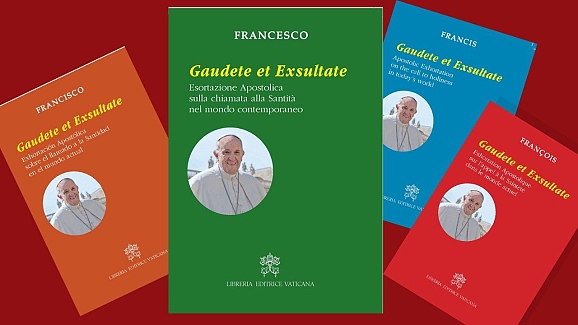
 The third Apostolic Exhortation of Pope Francis on the call to sanctity in the contemporary world, “Gaudete et Exsultate” (Rejoice and be glad) was published on 9 April. Five Chapters, 44 pages: not a treatise on holiness, but an invitation to all, especially the young people, to “let the call to sanctity echo once again” indicating its risks, challenges, its opportunities.” Francis remarked – “Holiness is the nicest countenance of the Church. Also in the most varied environments outside the Catholic Church, the Spirit arouses signs of his presence that even help the disciples of Christ.” To become saints – the Pope sustained – we don’t have to copy lifestyles that may seem unreachable: “What counts is that each of the faithful discerns his own path and lets the best of himself emerge, that is, all the very personal things God has endowed him with and which does not lie in imitating something which was not conceived for him.” How can we answer this call? It’s done by tracing the path of the evangelical Beatitudes, a positive model “in the light of the Master” and a major road “against the current” with respect to the direction of the world everyone pursues. Gaudete et Exsultate
The third Apostolic Exhortation of Pope Francis on the call to sanctity in the contemporary world, “Gaudete et Exsultate” (Rejoice and be glad) was published on 9 April. Five Chapters, 44 pages: not a treatise on holiness, but an invitation to all, especially the young people, to “let the call to sanctity echo once again” indicating its risks, challenges, its opportunities.” Francis remarked – “Holiness is the nicest countenance of the Church. Also in the most varied environments outside the Catholic Church, the Spirit arouses signs of his presence that even help the disciples of Christ.” To become saints – the Pope sustained – we don’t have to copy lifestyles that may seem unreachable: “What counts is that each of the faithful discerns his own path and lets the best of himself emerge, that is, all the very personal things God has endowed him with and which does not lie in imitating something which was not conceived for him.” How can we answer this call? It’s done by tracing the path of the evangelical Beatitudes, a positive model “in the light of the Master” and a major road “against the current” with respect to the direction of the world everyone pursues. Gaudete et Exsultate
With her reassuringly calm demeanour, mother-of-two Maria – born in Italy, married to a French man – teaches her mother tongue in a notorious neighbourhood on the outskirts of Paris, in one of those schools which finds it practically impossible to retain its staff. In fact, determination, courage and passion are all required in no small measure to be able to work in such a disadvantaged area, scarred by drug and arms trafficking, with dealers right at the school gates. The pupils come from a wide range of cultures and different nationalities. Maria reflects, “For me, it’s quite simply a matter of responding to a calling to work for equal opportunities, to propose and deliver a programme of formation that aims high, and to bring the love of Christ where it seems to be lacking.” Maria explains how coming into contact as a child with Chiara Lubich nurtured this aspiration and sustained her into adult life. “Thanks to the relationships of unity I live with those who share this same ideal, I’m able to refresh my outlook and attitude every day, whatever difficulties I face.” It was a real challenge, especially at the start, to understand how to interact constructively with the students, how to react to their verbal aggression and acts of vandalism. It soon became clear that in order to be able to help the children, it was necessary to get the families involved. In addition, the constant stream of new teaching staff needed support in order to engage effectively with such a complex situation. This kind of supportive synergy among colleagues gave an excellent example to the students. Maria continues,“From an educational perspective, I base my work on an interdisciplinary approach incorporating cultural projects. The organisation of any project requires teamwork, and our attempt as colleagues to live in the spirit of fraternity, offers a credible model to the students.” These projects often conclude with a trip to Italy, both motivating the students to learn the language and encouraging cultural exchanges with Italian youth, which can also provide an enriching experience of fraternity. “This kind of project,” relates Maria, “leads to the involvement of our pupils’ families in the life of the school, it establishes a relationship of trust in which we can seek solutions together so that no student is held back by economic problems.” In other words, Maria’s objective is to create an educational network involving families and teachers, all striving for the human and cultural development of these at-risk children. It is an approach which is already showing positive results. When Aïcha was disrupting her class, it was quietly – but firmly – explained to her how “everyone must do their part to live in harmony”. Her response was to write, “I’m sorry for how I behaved on Friday. I let myself down and it’ll not happen again. You’re a great person, you’re clever and wise. You pass true values onto your students and make us want to do well. I’ll never forget you.” The care and respect given to each child encouraged another pupil, Yanis, who was at first extremely reserved, to open up and display a hitherto unexpressed interest in art and history. The key is always the personal care and attention due to each individual with their own story and their own sensitivity. “I’ve learnt never to expect immediate results,” concludes Maria. “When a young person shows no sign of improvement, it’s important to keep on believing in them, accompanying them, not allowing yourself to be blocked by anything, but continuing to identify the positive within them and giving value to that. Every day, the challenge is to find the courage and strength to nurture hope through actions aimed at building true relationships”.
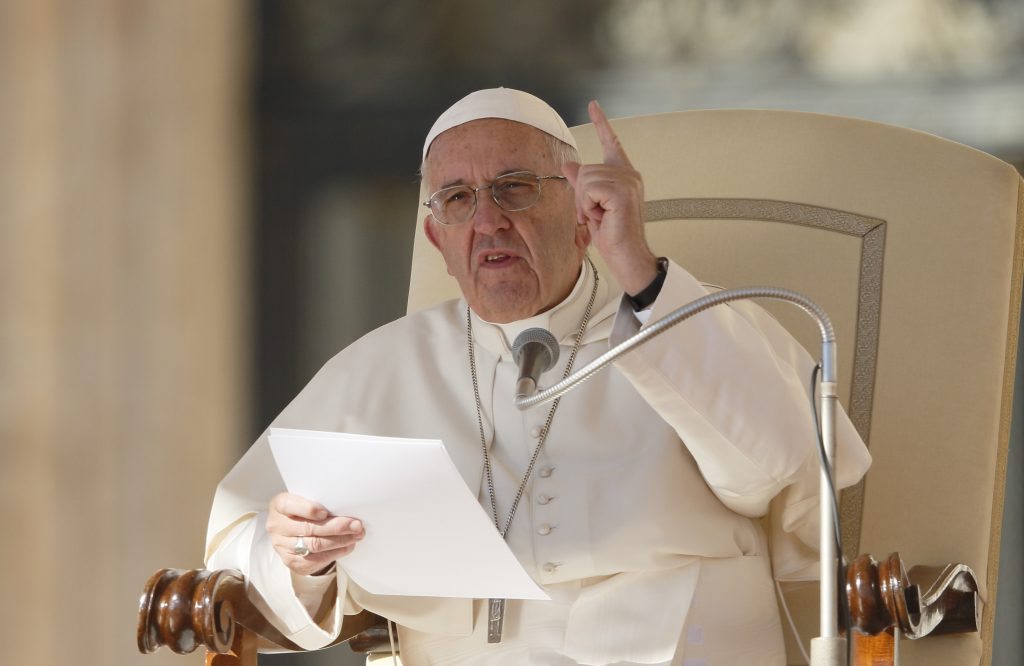
 “Horrible news of bombardments continues to arrive from Syria, with dozens of victims including women and children. News of many wounded by the effects of chemical substances contained in bombs. Let us pray for the deceased, the wounded and the families that are experiencing pain and suffering. There’s no such thing as a good war and a bad war and nothing, nothing can justify the use of such tools of extermination against individuals and whole populations. Let us pray that responsible politicians and military leaders choose the other path, that of negotiation, the only way that can lead to a peace that isn’t the result of death and destruction.” These words were spoken by Pope Francis on Sunday, April 8, 2018. We join in his appeal, praying that negotiated solutions will be found to the terrible conflict that is bloodying Syria in recent days and many other places that receive little coverage in the news, which continue to produce victims in many places in the world. And we continue to work at all level promoting peace through dialogue.
“Horrible news of bombardments continues to arrive from Syria, with dozens of victims including women and children. News of many wounded by the effects of chemical substances contained in bombs. Let us pray for the deceased, the wounded and the families that are experiencing pain and suffering. There’s no such thing as a good war and a bad war and nothing, nothing can justify the use of such tools of extermination against individuals and whole populations. Let us pray that responsible politicians and military leaders choose the other path, that of negotiation, the only way that can lead to a peace that isn’t the result of death and destruction.” These words were spoken by Pope Francis on Sunday, April 8, 2018. We join in his appeal, praying that negotiated solutions will be found to the terrible conflict that is bloodying Syria in recent days and many other places that receive little coverage in the news, which continue to produce victims in many places in the world. And we continue to work at all level promoting peace through dialogue.
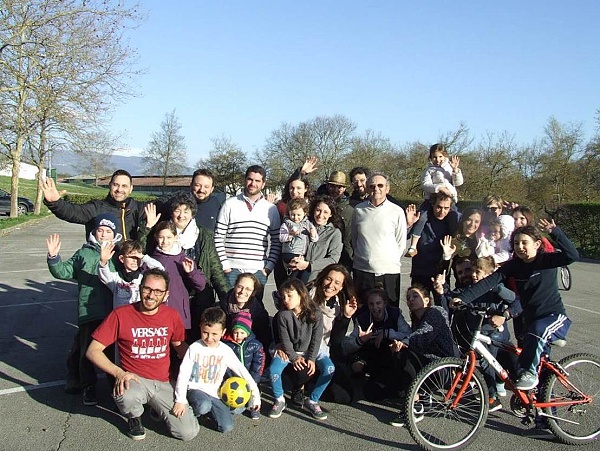
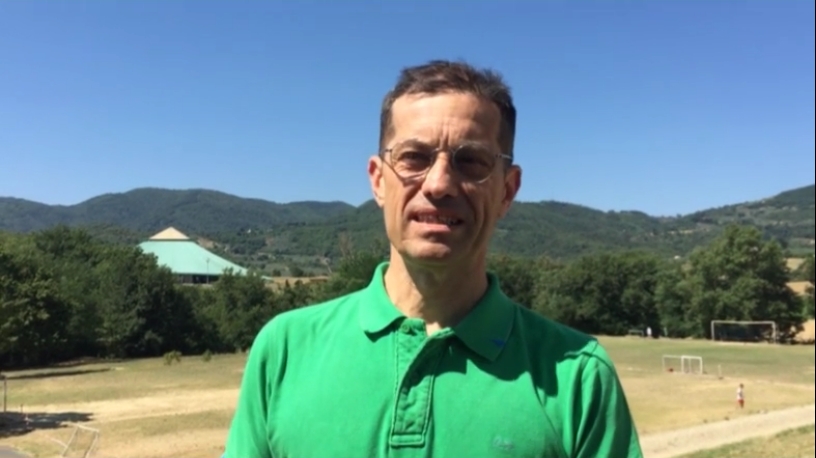 How did Loppiano take the news of the Pope’s visit? “Just a minute after the President, Maria Voce had spread the news on our social media pages and among the groups of inhabitants, there was a storm of messages expressing joy and wonder.” What does this event mean for you, as an inhabitant? “Even John Paul II was supposed to come here in the year 2000. The visit was cancelled four days before, due to a sudden change of programme. The desire for the Pope’s visit remained in our hearts then, and the same desire is present also today among the inhabitants. How would you describe the town to one who has no idea of what Loppiano is? “It is one of the places where one can more deeply experience the charism of unity that Chiara Lubich received from God, and from which the Focolare Movement was born and developed: that unity which is reached by building fraternal relationships, and living the testament of Jesus, “That all may be one.” About 1,000 people from 65 countries live in Loppiano, with various cultures, religions, and educational and social conditions. Here they learn first of all to become a community. What unites them is the desire to live the law on which the town is based: mutual love. This makes Loppiano a place of brotherhood.”
How did Loppiano take the news of the Pope’s visit? “Just a minute after the President, Maria Voce had spread the news on our social media pages and among the groups of inhabitants, there was a storm of messages expressing joy and wonder.” What does this event mean for you, as an inhabitant? “Even John Paul II was supposed to come here in the year 2000. The visit was cancelled four days before, due to a sudden change of programme. The desire for the Pope’s visit remained in our hearts then, and the same desire is present also today among the inhabitants. How would you describe the town to one who has no idea of what Loppiano is? “It is one of the places where one can more deeply experience the charism of unity that Chiara Lubich received from God, and from which the Focolare Movement was born and developed: that unity which is reached by building fraternal relationships, and living the testament of Jesus, “That all may be one.” About 1,000 people from 65 countries live in Loppiano, with various cultures, religions, and educational and social conditions. Here they learn first of all to become a community. What unites them is the desire to live the law on which the town is based: mutual love. This makes Loppiano a place of brotherhood.”  What’s life like in the town? “There are various economic activities, 11 training schools, a university institute, a big church that will host the Pope, many houses and cultivated fields. The inhabitants study, work, socialize, and live the normal life of all the towns, only that they try to do so by living the law of mutual love.” The Pope will arrive in Loppiano after Nomadelfia. What relationship is there between the two towns? “They have a lot in common, though with completely different histories and charisms: both are places of brotherhood that look to the lowly people and have the Gospel as their law. There have been various occasions for encounters, even recently. So we are happy that the Pope will land here with his heart full of what he will receive in Nomadelfia. He will be welcomed with the same love and enthusiasm.” Wherever the Pope goes, the spotlight of the world media turns on: how will the choice to visit Loppiano be interpreted? “I think that behind this desire is firstly the love for the charism of unity, gift which God has given us through Chiara Lubich. Bergoglio had met the Movement in Argentina, but even more closely as Pope. Loppiano is the place where this charism is most visible.” How are you preparing for the visit? “What Maria Voce said has become an imperative for us. In these 100 days we have undertaken the commitment to intensify the life of love and unity rooted in the Gospel, so that the Pope may find that “Where two or more united in my name ” (Matthew 18,20),” the presence of Jesus in our midst, is a reality. The Pope will stop to pray in the Church of Maria Theotokos, where there is a chapel dedicated to Christians of other confessions: what does this place represent? “Precisely Chiara wanted the Church to be in the geographic centre of Loppiano, so it would become the entire town’s point of unity. It is the place where we inhabitants meet daily to pray, but it is a reference point for the entire territory. It is the city’s seal.” Is it also a way of underlining the centrality of the figure of Mary in the Movement? “Certainly. Not by chance the Church was dedicated to Maria Theotokos, Mary Mother of God, to underline the strongly Marian feature of the charism and of the Focolare movement. And precisely because Mary is the Mother of God and thus of humanity, the Church is open also to people of other Christian confessions, and other religions and beliefs. Inside there are various points where each one can pray, feel at home and contemplate.” The Pope’s visit will take place on the 10th anniversary of the passing of Chiara Lubich. A coincidence? “I think we can consider this visit as a gift of God, a caress, and a sign of His love for the Work of Mary. Then we shall see what the Pope will want to say to us.”
What’s life like in the town? “There are various economic activities, 11 training schools, a university institute, a big church that will host the Pope, many houses and cultivated fields. The inhabitants study, work, socialize, and live the normal life of all the towns, only that they try to do so by living the law of mutual love.” The Pope will arrive in Loppiano after Nomadelfia. What relationship is there between the two towns? “They have a lot in common, though with completely different histories and charisms: both are places of brotherhood that look to the lowly people and have the Gospel as their law. There have been various occasions for encounters, even recently. So we are happy that the Pope will land here with his heart full of what he will receive in Nomadelfia. He will be welcomed with the same love and enthusiasm.” Wherever the Pope goes, the spotlight of the world media turns on: how will the choice to visit Loppiano be interpreted? “I think that behind this desire is firstly the love for the charism of unity, gift which God has given us through Chiara Lubich. Bergoglio had met the Movement in Argentina, but even more closely as Pope. Loppiano is the place where this charism is most visible.” How are you preparing for the visit? “What Maria Voce said has become an imperative for us. In these 100 days we have undertaken the commitment to intensify the life of love and unity rooted in the Gospel, so that the Pope may find that “Where two or more united in my name ” (Matthew 18,20),” the presence of Jesus in our midst, is a reality. The Pope will stop to pray in the Church of Maria Theotokos, where there is a chapel dedicated to Christians of other confessions: what does this place represent? “Precisely Chiara wanted the Church to be in the geographic centre of Loppiano, so it would become the entire town’s point of unity. It is the place where we inhabitants meet daily to pray, but it is a reference point for the entire territory. It is the city’s seal.” Is it also a way of underlining the centrality of the figure of Mary in the Movement? “Certainly. Not by chance the Church was dedicated to Maria Theotokos, Mary Mother of God, to underline the strongly Marian feature of the charism and of the Focolare movement. And precisely because Mary is the Mother of God and thus of humanity, the Church is open also to people of other Christian confessions, and other religions and beliefs. Inside there are various points where each one can pray, feel at home and contemplate.” The Pope’s visit will take place on the 10th anniversary of the passing of Chiara Lubich. A coincidence? “I think we can consider this visit as a gift of God, a caress, and a sign of His love for the Work of Mary. Then we shall see what the Pope will want to say to us.”
Christos anesti! Alithos anesti! Христос воскресе!Christ is Risen! Indeed He is risen! Khrishti unjal! Vertet unjal! Hristos voskrese! Vo istina voskrese! Khrystos uvaskros! Sapraudy uvaskros! Le Christ est ressuscité! En verité il est ressuscité! Kriste ahzdkhah! Chezdmaridet! Christus ist erstanden! Er ist wahrhaftig erstanden! Cristo è risorto! Veramente è risorto! Cristos a inviat! Adevarat a inviat! Khristos voskrese! Voistinu voskrese! Cristos vaskres! Vaistinu vaskres!Christ is risen from the dead, trampling down death by death, and on those in the tombs bestowing life!Христос воскресе из мертвых, смертию смерть поправ, и сущим во гробех живот даровав! |
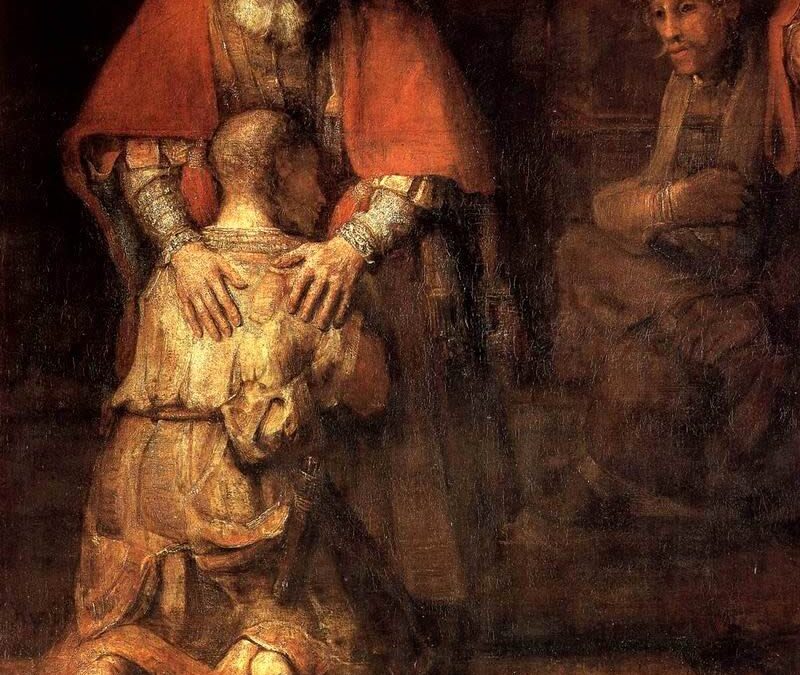
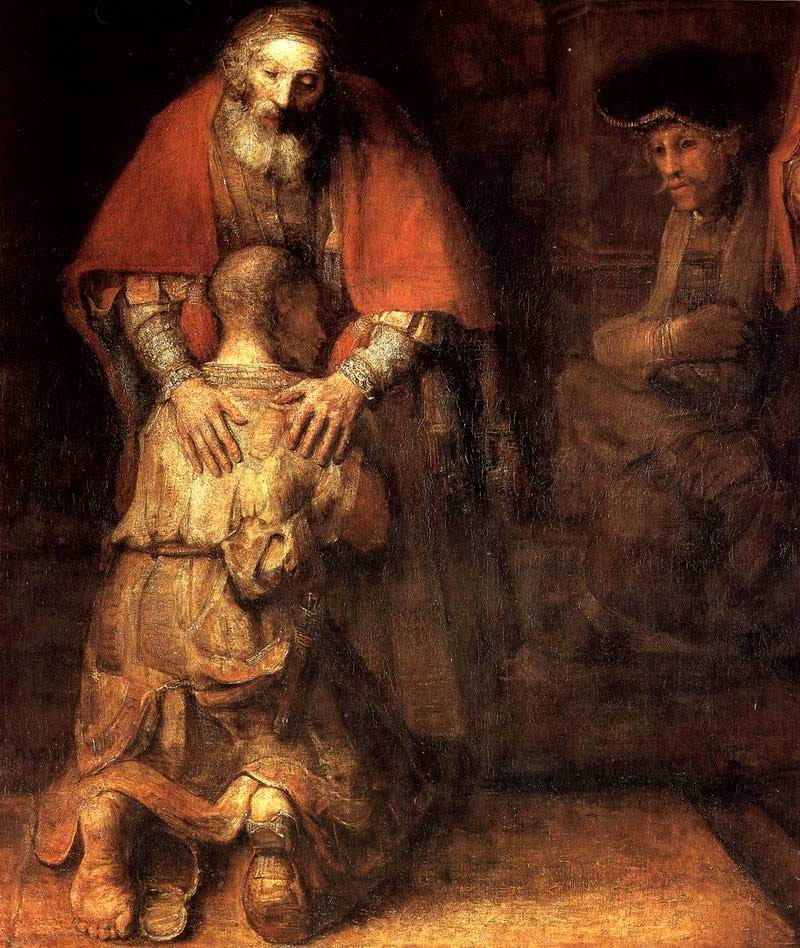
“The Return of the Prodigal Son” by Rembrandt